 |
Earhart Project Research Bulletin #72
September 9, 2014
A Smoking Gun?
Artifact #2-2-V-1
Photo courtesy Miami Herald. |
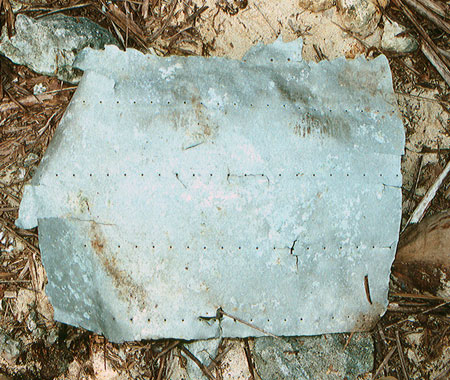 |
| Please note: this document will take a little while to load completely as there are many images. Please be patient! | |
We have more to do before we’re ready to say it’s a certainty, and we could yet discover some disqualifying feature, but it’s looking more and more like Artifact 2-2-V-1 is the patch that was installed on Earhart’s Electra during her stay in Miami at the beginning of her second world flight attempt. Continuing research has answered important questions:
Why does the shiny new patch look the way it does in the Miami Herald photo of NR16020
taxiing out for takeoff on June 1, 1937?

The upper two-thirds of the patch is light colored and the bottom third is dark. Why?

Another photo taken at almost the same moment but from an elevated position further away gives us the answer. The photo appeared in an obscure booklet titled “America’s First Lady of Flight” published by The Fraternal Order of Air Mail Pilots in 1962 and shows the crowd of well-wishers whose reflection accounts for the dark area on the patch.
Do the dimensions of the artifact fit within the dimensions of the patch?
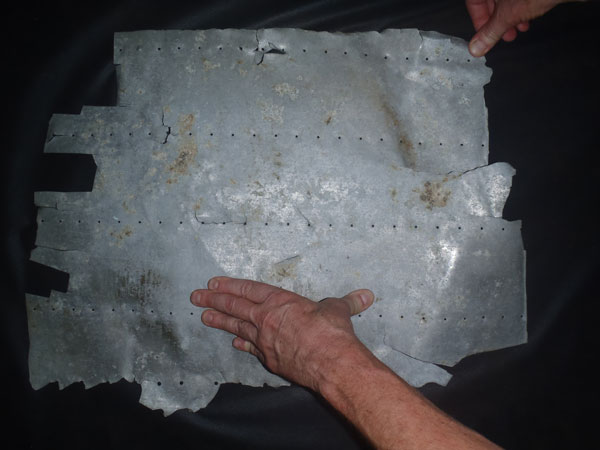
To answer that question required accurate scaling and the removal of camera-induced distortion from the Miami Herald photo and a photo of 2-2-V-1 pressed down to allow measurement of its full size.
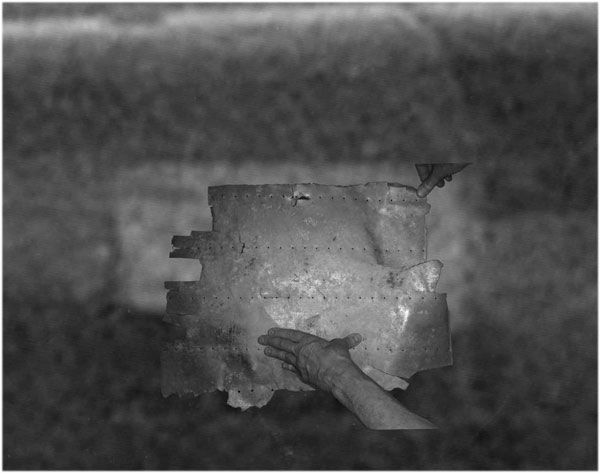
The edges of the patch were straight and riveted, while the borders of the artifact are all failed edges, with one side showing evidence of a line of staggered rivets. If the artifact is a broken-out portion of the patch it must fit within the dimensions of the patch. TIGHAR forensic imaging scientist Jeff Glickman was able to remove the distortion and accurately scale and overlay the photos. The artifact fits nicely within the patch.
Does the rivet pattern match?
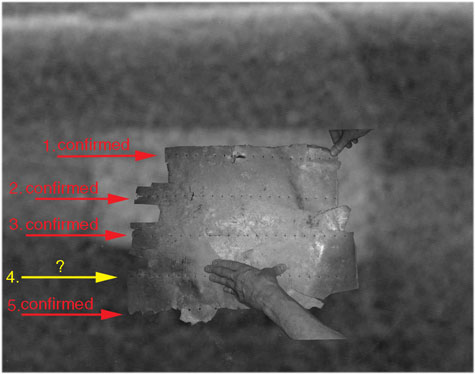 |
Yes, to the degree it can be determined at this time. So far, Jeff Glickman has been able to confirm that four of the five lines of rivet holes on the artifact match rivet lines that are detectable on the patch. The line of rivets that falls within the dark area on the patch may or may not be possible to find simply due to the lack of contrast. With an accurately scaled fit and a four-out-of-five match on the rivet pattern the probability that 2-2-V-1 is the Miami Patch approaches certainty. | ||||||
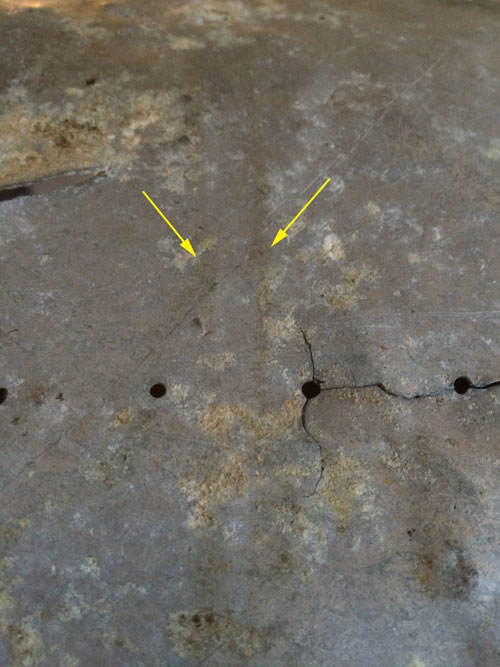 |
|||||||
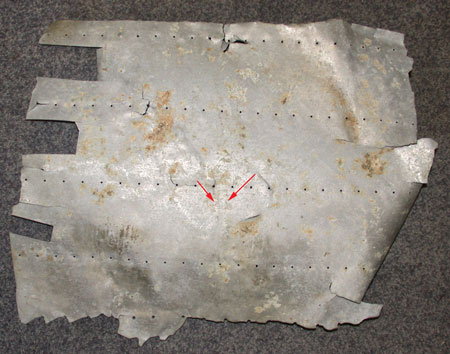 The identification got an unexpected boost when Jeff Glickman noticed an indentation in the artifact that suggests the presence of a stiffener running vertically behind, but not riveted to, the metal sheet. |
|||||||
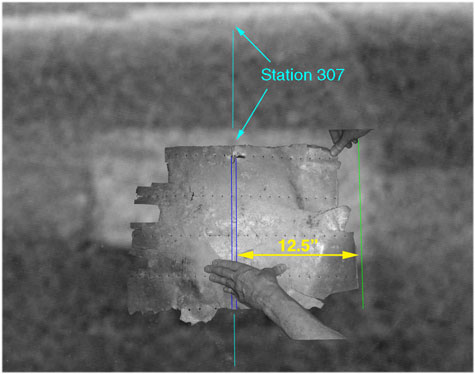 |
One edge of the artifact failed from metal fatigue after cycling back and forth against a rigid underlying structure. If the artifact is positioned in the overlay with that edge against the known underlying structure to which the window had been riveted, the implied vertical stiffener corresponds exactly with the standard Electra vertical stiffener at Fuselage Station 307. This new correlation between the artifact and the Electra prompted further investigation that revealed a possible explanation for why the window was replaced.
The photo below was taken in January or early February 1937 shortly after a special window was installed in the starboard-side of the lavatory compartment. |
||||||
|
|||||||
 |
|||||||
| Cutting internal structures to install the starboard-side window almost directly across from the hole for the cabin door created a weak spot in the fuselage. | |||||||
|
|||||||
| This false color image processed by Jeff Glickman reveals possible damage to the airframe in the weakened area – damage that might not have been otherwise apparent. | |||||||
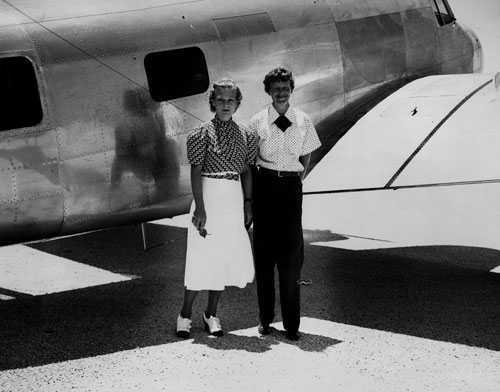 |
The Miami Herald photo of Amelia with her husband’s daughter-in-law Nilla Putnam (left) was taken on Saturday, May 29, 1937. It was on this day that Earhart announced that she had begun her second world flight attempt, reversing her course to west-to-east. When she departed for Puerto Rico early on the morning of June 1st the window was gone, replaced with a shiny new aluminum patch.
It now appears that the replacement of the window with a patch was a last minute attempt to restore the structural integrity of the aircraft after the hard landing in Miami revealed the weakness in the fuselage. |
||||||
 |
|||||||
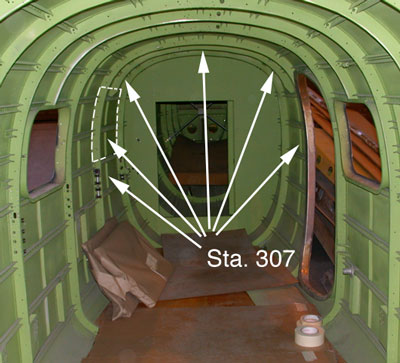 |
The structure of the patch, as implied by the features visible on 2-2-V-1, re-connected stringers to restore longitudinal strength. Stiffeners were added to prevent “oil-canning” of the patch, and the vertical stiffener at Station 307 was re-installed to restore circumferential strength. The vertical stiffener was not riveted, possibly because there was no need, or perhaps they simply ran out of time. As compelling as all this may seem, there is more we need to do before we draw any firm conclusions. |
||||||
| On August 28 and 29 Jeff Glickman took hyperspectral images of the artifact using a Surface Optics SOC710-VP camera. | |||||||
|
|||||||
Hyperspectral imaging is an expensive but potentially revealing analytical tool. The human eye and conventional color photography see visible light in three bands – red, blue, and green. Spectral Imaging divides light into many more bands including some beyond the visual range. Hyperspectral imaging covers a broad range of light wavelengths and makes it possible to identify specific materials and substances based on their unique light signature. The Surface Optics SOC710-VP is the only portable hyperspectral camera capable of imaging 128 wavelengths. The company agreed to rent us a unit at a discounted price and the TIGHAR membership responded with donations that made it possible to do the work. In two long days Jeff was successful in acquiring hyperspectral data on 2-2-V-1 and dozens of other artifacts collected from Nikumaroro. The data will take time to process and we have no way of knowing what we’ll find but we’re confident that we’ll know much more than we know now. The likelihood that 2-2-V-1 is a broken-out section of the Miami Patch raises many questions about how it came to be broken out, how it came to end up where we found it, and what clues it may give us about what happened to the rest of the airplane. This is an exciting time. There is much more to do but with your help the answers are coming. | |||||||
|
||||||||||
|
|
||||||||||
|
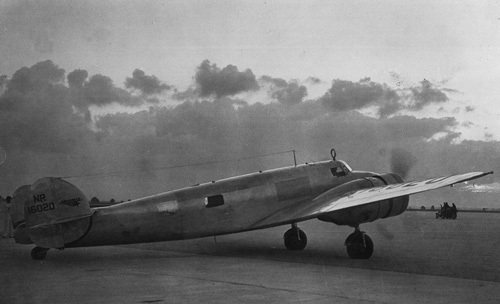
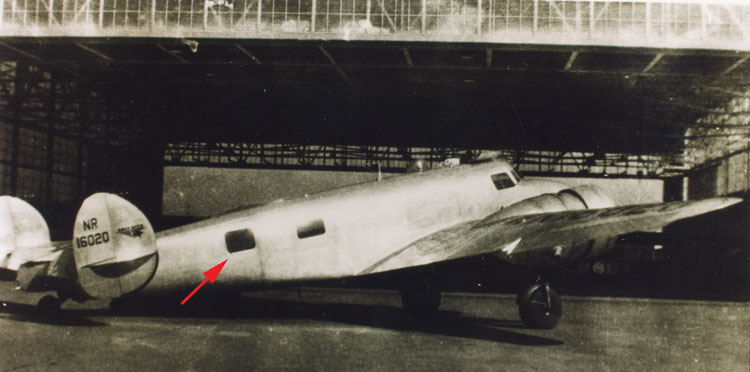




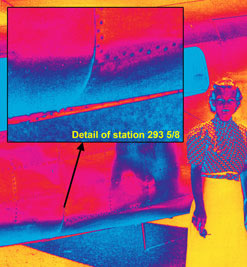 On May 29th the special window was still in place but false color analysis of the photo shows skin separation at the lower part of the weakened area – possibly caused, or made worse, by Earhart’s hard landing upon arrival in Miami a week earlier.
On May 29th the special window was still in place but false color analysis of the photo shows skin separation at the lower part of the weakened area – possibly caused, or made worse, by Earhart’s hard landing upon arrival in Miami a week earlier.





